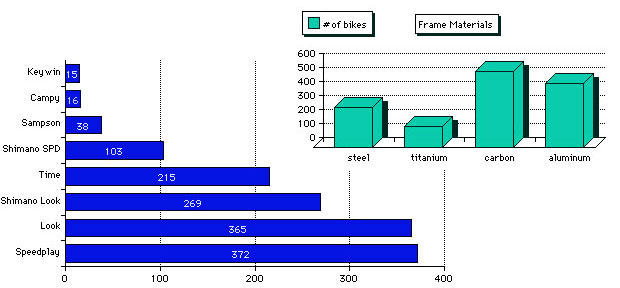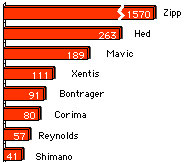Kona Survey: 1995
Over the next two weeks we’re going to step back in time and present the Kona Bike Survey from its inception until the year when I stopped producing it. As many Slowtwitchers know, the Survey began in 1992, by me, during the time I owned and ran the company I founded in 1987, Quintana Roo. I produced this Survey until the end of my QR days, in 1999, and continued the Survey through 2006 as a Slowtwitch feature.
I produced the Survey every year from 1992 through 2006 except for two years taken off, due to some excuse or another that escapes my memory. Over a 2-week period I’ll be reproducing these Surveys precisely as they were written, with the exact graphs published at the time. The only difference will be prefaces like these.
I don’t have a record of the first 3 Kona Bike Surveys, nor do I even remember where I published them. Online perhaps, as the original Slowtwitch site – Rooworld.com – was as far as I know the first-ever site published by a bicycle manufacturing company. It debuted at the very end of 1993. But this 1995 Survey recollects some of the data going back to the 1992 bike count. -DE
This is the 4th year the survey has been conducted at the triathlon in Kona, and we are not usually surprised. This year the athletes fooled us. There were so many new bikes – much more than ever before – it was hard to tell what was "hot" simply based on the total number of bikes a manufacturer had in the race. For example, from '92 'til '94 Treks grew from 118 bikes to 176, and then this year fell to 141. However, we were shocked at the number of new Treks in the race, much more than ever before. Probably 80 percent of the Treks were OCLV's (many of them this year's).

The other top companies were similarly represented by new bikes. The Cannondales were this – or last – year's R700 or R1000; the Kestrels were mainly of the recent "seat tube-less" variety (500sci or the new KM40); the Softrides were new, as were many QR's, Zipps and Litespeeds. We were particularly interested in all the new Zipps, as we had previously suspected that Softride had won the beam battle last year (any rumors of Zipp's demise were obviously premature).
People in this year's race were driven to get a new bike, and we don't know why. Maybe it was the general improvement in the economy. Possibly it was that tri-specific manufacturers have been finally able to get their messages across. To wit, other than Trek, the top 8 manufacturers offer dual 26" steep seat-angled bikes, and these were the predominant bikes among these best-represented manufacturers (we saw relatively few standard geometry Cannondales compared to years past). In fact, 525 (38 percent) of this year's bikes had dual 26" wheels, compared to 184, 297 and 455 in '92 thru '94, and 776 bikes (58 percent) were set up in 77 degree or steeper seat angle configurations.
Nineteen percent of bikes were steel, 11 percent titanium, 31 percent aluminum, and 39 percent carbon. Three years ago, frame materials were hot; two years ago, it was weight. This year, physics rules. Biomechanics (a frame that offers a good body position while in the aero position), aerodynamics, or wheel size were hot buttons for these Ironman athletes.

We counted the seat pads in the race, to see whether we were making an impact with the saddle covers we make for racing saddles. In all, there were 281 riders using a padded saddle cover of some type, 223 were either QR's Mr. Softies, or Mr. Flities.
Finally, we started something new this year, a survey of pedals. Actually, we had help from Speedplay, who sat next to us at the transition area entrance and dutifully (and accurately) logged which pedals were on each bike. While Shimano tied with Speedplay for the most pedals in the race, it's obvious Speedplay has the most momentum, when one considers that three years ago "Speedplay" consisted of one pair of pedals that owner/founder Richard Bryne was "peddling" to the industry. It also underscores the trend away from the "gruppo", a movement which triathletes furthered more than any singular group of cycling enthusiasts.


